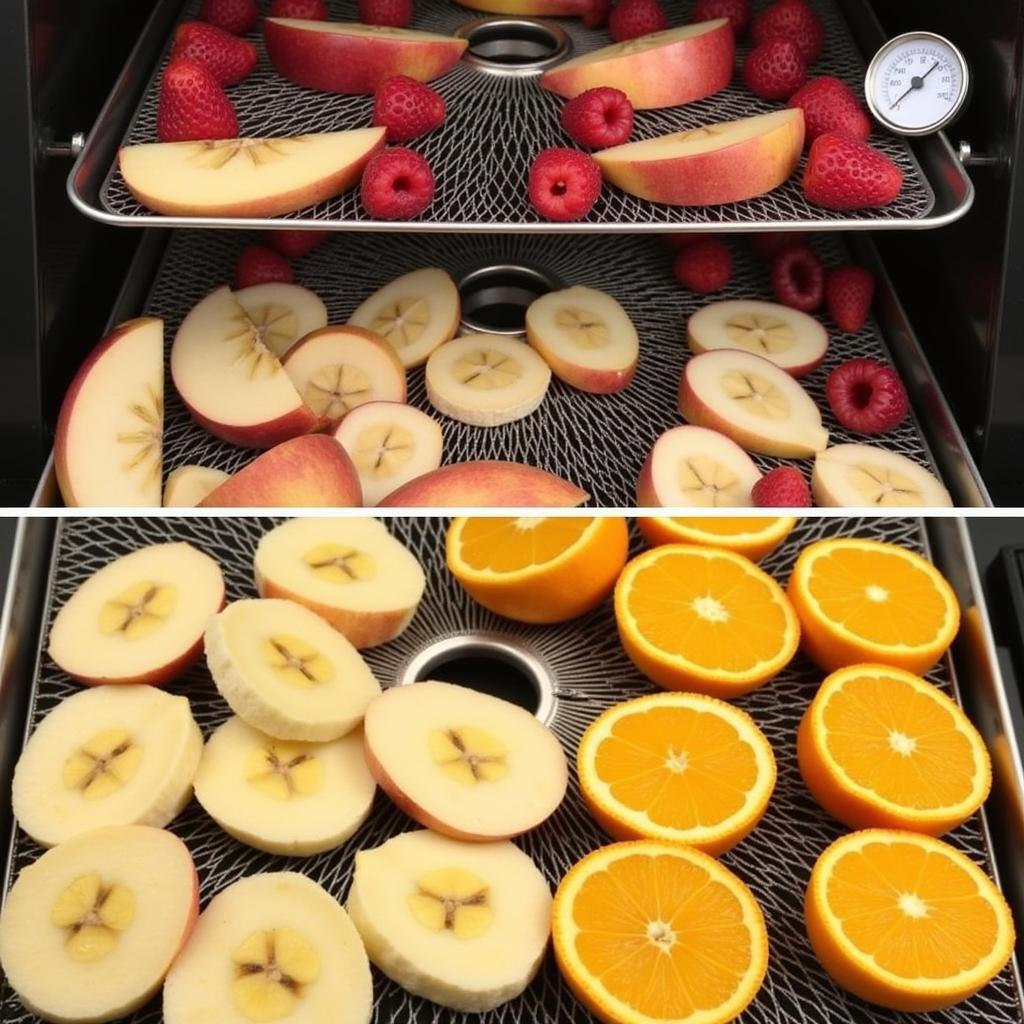A Food Dehydrator Temperature Chart is an essential tool for anyone looking to preserve food at home. Knowing the correct temperatures for different foods ensures safe and effective drying, maximizing flavor and shelf life. Whether you’re a seasoned pro or just starting out, understanding how to use a food dehydrator temperature chart can elevate your dehydration game. This comprehensive guide will explore everything you need to know about food dehydrator temperature charts, from understanding the basics to mastering advanced techniques. Let’s dive in!
Understanding the Basics of Food Dehydrator Temperature Charts
Food dehydrator temperature charts provide a recommended temperature range for various food types. These charts often come with your dehydrator or can be easily found online. Why are these charts so important? Because different foods have different optimal drying temperatures. Too low, and you risk bacterial growth; too high, and you’ll end up with “case hardening,” where the outside dries too quickly, trapping moisture inside. A good food dehydrator temperature chart helps you avoid these pitfalls. Using a 12 tray food dehydrator can make the process even more efficient. You can find a helpful food dehydrator manual for your specific model too.
What should you look for in a reliable chart? It should be clear, easy to read, and comprehensive, covering a wide range of foods. Some charts even offer additional tips, like pre-treatment methods or recommended drying times. A dehydrating food time chart can be particularly useful in conjunction with temperature guidelines.
 Food Dehydrator Temperature Chart Basics
Food Dehydrator Temperature Chart Basics
Dehydrating Fruits: Temperature Guide
Fruits are a popular choice for dehydration, transforming into chewy, flavorful snacks. Most fruits dehydrate best between 130°F and 140°F (54°C and 60°C). This range ensures even drying while preserving essential nutrients and vibrant colors. However, some fruits with higher water content, like berries, might benefit from a slightly lower starting temperature to prevent case hardening.
What happens if the temperature is too high? The fruit can become overly dry and brittle. Too low? It might take significantly longer to dehydrate and could potentially spoil. Precision is key!
 Dehydrating Fruits: Temperature Guide
Dehydrating Fruits: Temperature Guide
Dehydrating Vegetables: Temperature and Tips
Dehydrating vegetables allows you to enjoy garden-fresh flavors all year round. A temperature range of 125°F to 135°F (52°C and 57°C) works well for most vegetables. However, certain vegetables, like peppers and onions, may require a slightly higher temperature to ensure thorough drying.
“Pre-treating vegetables, especially those prone to enzymatic browning, is crucial,” advises culinary expert, Amelia Green, “Blanching or dipping in a citric acid solution helps maintain color and quality during the dehydration process.”
Dehydrating Meats: Achieving Safe and Delicious Results
Dehydrating meat, or making jerky, requires careful attention to temperature for food safety. A temperature of 160°F (71°C) is crucial for eliminating harmful bacteria. Maintaining this temperature throughout the dehydration process ensures a safe and delicious end product.
“Using a quality food dehydrator with accurate temperature control is paramount when dehydrating meat,” states renowned food safety specialist, Dr. James Peterson. “Investing in a reliable device provides peace of mind and ensures a safe and enjoyable jerky experience.”
Dehydrating Herbs: Preserving Flavor and Aroma
Herbs dry beautifully at lower temperatures, typically between 95°F and 115°F (35°C and 46°C). This gentle drying preserves their delicate flavors and aromas. Once dried, store your herbs in airtight containers in a cool, dark place to maintain their freshness.
Conclusion: Mastering Your Food Dehydrator
Mastering the art of dehydration hinges on understanding and utilizing a food dehydrator temperature chart effectively. By following the recommended temperature guidelines for different food types, you can achieve optimal results, preserving the flavor, texture, and nutritional value of your favorite ingredients. Happy dehydrating!
FAQ
- What is the ideal temperature for drying fruit leather?
- Can I dehydrate dairy products?
- How do I prevent case hardening?
- What is the best way to store dehydrated food?
- How long does dehydrated food last?
- Can I dehydrate leftovers?
- How do I clean my food dehydrator?
For any assistance, please contact us at Phone Number: 02437655121, Email: minacones@gmail.com or visit us at 3PGH+8R9, ĐT70A, thôn Trung, Bắc Từ Liêm, Hà Nội, Việt Nam. We have a 24/7 customer support team.